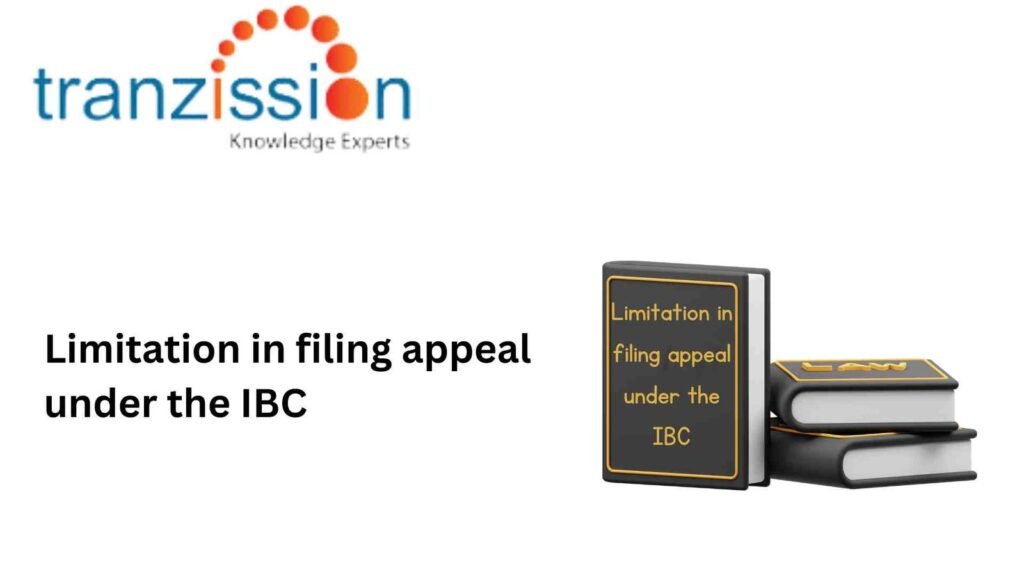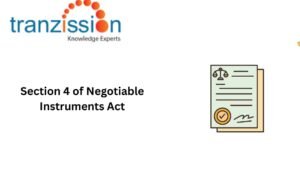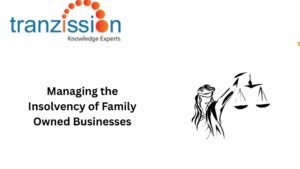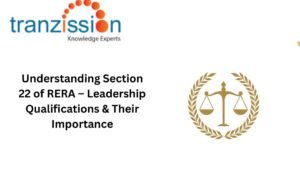
Limitation in filing appeal under the IBC

Table of Contents
The main aim of the Insolvency and Bankruptcy Code, 2016 (IBC) is to resolve the financial issues of the corporate debtor in a time-bound manner. Section 61 of the IBC provides the statutory right to appeal against the order of the Adjudicating Authority. Under this section, the Limitation in filing appeal under the IBC can be extended if there is sufficient reason which satisfies the Appellant Tribunal.
Limitation Period Under IBC
Under the IBC there is a small window for filing appeals after the National Company Law Tribunal order. This may create potential challenges when parties fail to file appeals within the prescribed period due to delays in the resolution process. The legislation that governs the timeframe for filing appeals is the IBC and the Limitation Act, of 1963:
Read more : Balancing environmental claims during CIRP
Statutory Framework:
The Limitation Act, of 1963 governs the time limits for initiating legal proceedings in India, and includes a 3-year Limitation in filing appeal under the IBC that begins on the date of default, which is applied through section 7 of the IBC. This Act is also applied to the IBC through section 238 of the IBC. Section 61(2) of the IBC provides a 30-day Limitation in filing appeal under the IBC period for filing appeals before the National Company Law Appellate Tribunal (NCLAT) from the order of the National Company Law Tribunal (NCLT). An additional 15-day extension may be granted at the discretion of the NCLAT if sufficient cause is demonstrated.
Importance of Adhering to Timelines:
Adhering to timelines under the IBC, particularly for appeals, in important as it ensures the efficient resolution of insolvency proceedings to protect the value of the debtor’s assets and safeguard the interests of its creditors. This prevents the misuse of legal processes to delay proceedings, allowing for timely decision-making.
Key Judicial Precedents on Limitation Period
Understanding judicial precedents on the Limitation in filing appeal under the IBC provides clarity on the time limit for insolvency proceedings to initiate the corporate insolvency resolution process (CIRP), submitting claims, filing appeals, etc.
In Sesh Nath Singh v. Baidyabati Sheoraphuli Cooperative Bank examined the issue of whether the delay beyond a period of 3 years can be condoned by filing a section 5 under the Limitation Act and whether the exclusion of time under section 14 of the Limitation Act will be applicable in the case of a section 7 application under IBC. According to the decision of the Hon’ble Supreme Court, the law of limitation will be applicable in the proceedings before the NCLT and NCLAT after the incorporation of section 238A of the IBC, the Limitation in filing appeal under the IBC for filing sections 7 and 9 applications. For the condonation of delay, it can be granted without section 5 application at the discretion of the NCLT. The Supreme Court emphasised the strict application of the period under IBC in Innoventive Industries Ltd v. ICICI Bank. As per this decision, ‘time is of the essence’ under the insolvency proceedings and must be completed within 180 days of the application’s admission, and can only be extended for 90 days. After analysing the scheme of the Limitation Act, the Supreme Court noted that this Act applies to courts and not to quasi-judicial tribunals. The NCLAT reiterated that delays beyond 15 days from the expiration of the limitation period could not be condoned under IBC in Pardeep Kumar v. Steel Strips Wheels Ltd.
Read more : Offences and Penalties under IBC, 2016
Methodology for Calculating Limitation Period
Calculating the Limitation in filing appeal under the IBC establishes a time frame for filing applications or appeals before the tribunal, gives sufficient time to parties involved in the insolvency process to prepare for the case, and determines the timeline for each stage of CIRP.
General Principles:
The limitation period for an order from the NCLT begins on the date of pronouncement and not from the date of the receipt of the order. As per the proviso to section 61(2) of the IBC, the jurisdiction to condone the delay conferred upon NCLAT is only 15 days. The benefit of public holidays or weekends can only be given while computing the Limitation in filing appeal under the IBC of 30 days under section 61(2) and not otherwise.
Online Tools for Calculation:
Certain tools can be used to calculate the period for filing appeals under the IBC to avoid any further legal disputes while complying with the IBC provisions. For instance, the IBC Law Limitation Calculator, available at https://ibclaw.in/calculator-limitation-period-calculation-for-filing-nclat-appeal/, provides automated solutions for calculating limitation periods accurately.
Practical Tips:
When calculating the limitation period under the IBC, the first step is to monitor the date of the NCLT order closely. You should also take into account the statutory holidays while filing for an appeal under the IBC. It is important to seek legal advice promptly to avoid unnecessary delays and filing for condonation of delay under section 61 of the IBC.
Challenges in Limitation Compliance
Adhering to the limitation period for filing appeals under the IBC has challenges due to procedural issues, the short timeframe, and the interpretation of legal jargon.
Delays in Receiving Certified Orders:
The IBC provides that an appeal should be filed from the date of the order, not the date of receiving the certified copy. This potentially causes issues with compliance even if the delay is due to administrative issues with obtaining the certified copy. This is a common issue faced by litigants and impacts their ability to file within the prescribed timeline.
Uncertainty in Judicial Interpretation:
Different courts may interpret the time limit for filing an appeal under section 61 of the IBC differently. When the limitation period starts this leads to confusion and creates issues for parties to comply with the deadline, especially if they are unsure whether the “date of knowledge” of the order should be considered. This could result in missing the appeal window due to a miscalculation of the time limit.
Practical Hindrances:
Many real-world scenarios prevent a party from filing an appeal, such as receiving necessary documents, legal procedures, or difficulties in obtaining legal representatives, and other administrative bottlenecks and logistical delays that complicate timely filings.
Recent Trends and Developments
Evolution of Judicial Stance:
The primary development is the NCLAT’s emphasis on enforcing the 30-day limitation period for filing appeals under section 61 of the IBC. There has been a shift from leniency towards strict timelines that have been observed to uphold the intent of the IBC. Courts have been focusing on procedural compliances, potentially dismissing appeals due to exceeding the 30-day limit without sufficient reason.
Use of Technology for Timely Compliance:
The IBC has been digitised to make it more accessible to stakeholders, such as online portals and websites for registration and meeting compliance requirements. For instance, the limitation Calculator streamlines the process for professionals which reduces the risk of oversight.
Judicial Discussions on the Doctrine of Condonation:
Recent judicial discussions regarding condonation of delay in filing appeals under the IBC emphasises a case-by-case analysis, where courts are inclined to condone delays for “sufficient causes”. The doctrine of condonation of delay has been subject to varying interpretations, with stricter adherence under IBC compared to other laws.
Practical Recommendations for Professionals
Each party involved in the resolution process should do their due diligence to avoid delaying the process and facing possible legal consequences, this includes:
For Insolvency Professionals:
An insolvency professional should carefully monitor the 30-day window for filing appeals from the date of the NCLT order and proactively seek extensions if necessary with valid justifications. They should ensure timely communication of tribunal orders to stakeholders and maintain a robust monitoring system for limitation deadlines.
For Lawyers:
It is important that lawyers promptly review NCLT orders upon receipt and immediately initiate the appeal process within 30 days under section 61(2) of the IBC. To make the process easier, they should use tools like limitation calculators for accurate timelines.
For Creditors and Debtors:
Creditors, and debtors should monitor debt closely, maintain detailed records of all defaults, and regularly consult with legal advisors to stay informed about limitation-related updates and requirements.
Conclusion : Limitation in filing appeal under the IBC
The limitation period for filing appeals before NCLAT is a critical component of the insolvency resolution framework under IBC. Courts generally interpret the limitation period strictly, and appeals filed beyond the 45-day window are usually dismissed. Hence, failing to file an appeal within a stipulated time frame can result in the appeal being rejected due to the limitation period expiring. By adhering to prescribed timelines, professionals can ensure compliance while supporting the broader goals of the Code.





